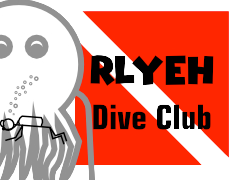Corrections to my Previous Review #
Let’s start with some corrections to my previous review of the Blood & Plunder Core Rulebook Revised:
Fortifications #
In my previous review I mentioned that purchasing Fortifications alongside ships is mentioned but details are not provided. This is not correct: Pages 149-150 contains a Scenario Special Rule for Fortifications listing several options. In my defense, this is another set of Special Rules and the Fortifications rule is outside alphabetical order. The listed Fortifications are much cheaper than the ships so expect to be able to buy several Watchtowers, Breastworks, and Gun Emplacements to replace even a single moderately large ship.
Soundtrack #
While I maintain that the game is not intended to represent the adventures showcased in the Pirates of the Caribbean movie series, it is unarguable that the soundtracks would make great background music for these games.
Scenarios #
I did not go into detail but the main book has 5 scenarios…Each of which has three variants. This means an effective 15 basic scenarios. They’re simple (some games would probably call them more “deployment diagrams” but they’re functional and include a great deal of variety.) This book includes many more.
Introduction and Extended Timeline #
Overall this book retains the styling and design of the previous book. It’s a pretty book to look at and generally a fun book to flip through. Artwork is similarly a mix of photos of minis posed as if in a game and line art. This kind of art in a rule book is inspirational: It makes you want to play a game that has the immersive feel of this image.
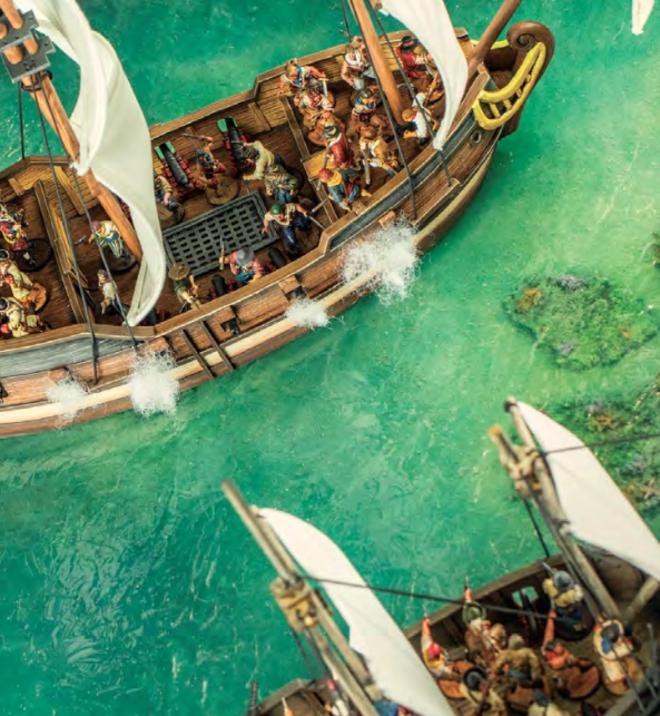
The photos remain high-quality and, importantly, don’t show the ‘staged’ look I feel most miniatures games use. The minis are shown as based, play-ready miniatures. One interesting aspect is the Legendary Commanders are often shown with line art a page or two away.
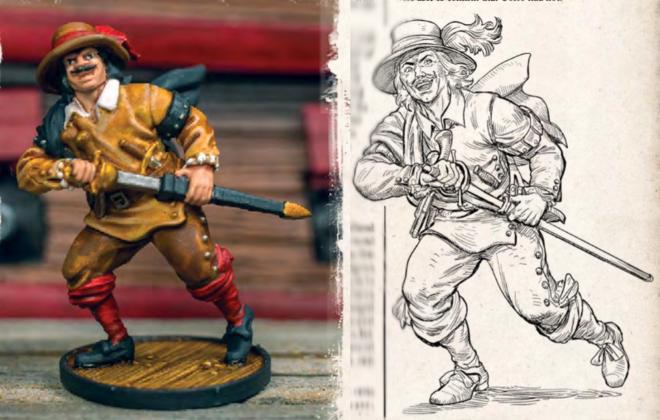
This is Juan Corso, from the Spanish section of this book shown in painted resin and in line art. I don’t know Firelock Game’s workflow but the line art appears to be either be either concept art of based off concept art used by the sculpting team.
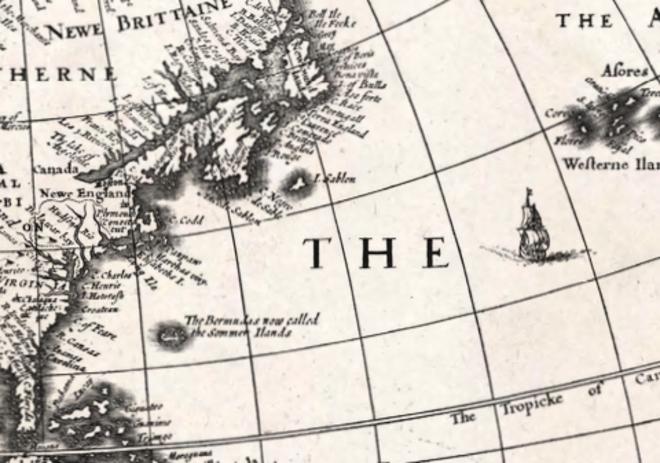
Both the Core book and this book have maps preceding the contents of the book. The Core has a rough map of The Spanish Main that is pretty, but looks much more ‘modern’ while the map here appears to be taken from a historical reference. It shows the Americas as known in the era of the game and has adornments such as sketches of native inhabitants of various regions and similar. The coastlines are covered with tiny notations of named details. (The bit of the two-page spread I’ve included here includes my home state of Maryland.)
An ’expanded’ timeline covers 1620 through 1699. It’s actually a very different focus than the previous Core book, which covers the years 1655 through 1718. Like much of this book, unfortunately, the way this book was written for the original Core rules but is now an add-on to an expanded core rulebook can be a bit awkward.
Army Scale Battles & Multiplayer Games #
I’m skipping ahead a bit (this chapter is about two thirds of the way through the book) but this chapter is related to some of the unused ‘mystery content’ from the main book and heavily referenced here. This is a 4 page section of notes on multiplayer games.
The ‘Army Scale’ rules are based around multiple forces built using the current rules, referred to here as a Company, under the larger Army. Companies should be about 100 points or larger and each is built independently although ships and similar can be purchased and crewed as a shared resource.
If an Army crosses multiple Nations, the Foreign Allies special rule (from the core) gets used. That Special Rule is in the core book, but unexplained.
Activations are by Company instead of by unit, which seems to move the game closer to a more Warhammer-style “I-Go-You-Go” game. I worry this could lead to a situation similar to a common complaint about recent Warhammer 40,000 editions in which players sometimes complain that the first-player roll is so decisive it makes the rest of the game almost pointless.
There’s a handful of other special modifications, options and such, but the rules form a core of a ‘game mode’ which can be used for two players for large games as well as multiplayer with the Companies spread among players. Other ways to break down a game to support multiple players are provided as well. It allows the game size to increase beyond the game’s recommend size.
The Nations #
The meat of the book is several chapters devoted to nationalities. The original book has Spanish, English, and French as well as the catch-all Unaligned option.
Spanish, English, and French #
They’re greatly expanded in this book which adds Dutch and Native American factions. The unaligned faction is expanded to to include several wildly different nations and groups. The basic counts of troops are expanded quite a bit: i’d call this something of a “do-over” in style, presentation, and content. Here’s some numbers for the English forces:
| English Inventory | Core | NPbTL |
|---|---|---|
| Standard Commanders | 6 | 12 |
| Historic Commanders | 4 | 10 |
| Legendary Commanders | 1 | 2 |
| Factions | 3 | 8 |
| Troops | 4 | 10 |
This seems to be the model for the other factions that have been updated. I believe all commanders, troops, and factions from the previous book are represented here, but expanded and updated. It does feel like once you have this book, there’s really no reason to refer to the older book’s army profiles. You’d probably be happier not doing so.
These chapters are much better organized than the previous book. A simple but key improvement is that the commanders are listed with their factions which resolves an issue from the previous book.
Factions #
Faction descriptions are broadly similar to the previous book: An interesting addition, showing the dedication to history by the developers, is inclusion of dates when each faction would be active. The more specific factions are more restricted to historical dates. I can’t say how ‘strict’ the community is about this aspect of the game.
The Faction concepts range from wide to narrow concepts. English Caribbean Militia have an over 80 year run but don’t gain the unique special options while Morgan’s Buccaneer’s only exist for five years. I do feel like the game encourages a style of play where players build lists as needed: if a player really wants to play Los Corsarios de Pardal which only exist from only exist from 1668-1671, their opponent might choose the English Royal Navy, Canadian Militia or other factions that exist in the era.
Factions have many more units available than the previous book. “Cross nationality” units are more common, especially on the more specialized factions. Factions list allowed Command Options so you don’t have to check the Commander list. Force building is still based around a simple system of Core and Support units although some factions and commanders modify this.
The factions presented in this book include an ‘Allied Factions’ section which is clearly marked as only applying to the Army Scale only. I discussed Army Scale a bit out-of sequence earlier: I can only assume the community has not been incredibly fond of this game mode as the later Raise the Black book omits this detail.
Commanders #
As stated Commanders are greatly increased in breadth from the previous book and formatting has changed a bit. The Standard commanders remain as three ‘grades’ but factions now have multiple “career paths” to differentiate them: The English have Navy Commanders, Army Commanders, Militia Commanders, and Buccaneer Commanders. Each has an Untested, Experienced, and Seasoned variant. They’re broadly similar to the previous book.
One option is some Commanders get an option to add a Horse. Along with cavalry troops this enables use of a unused Special Rule from the Core book and is overall a good addition, but as presented it’s unclear that the Horse option applies to an entire ‘row’ of Commanders.
To clarify, the Spanish Tercio Commander has an option, presented under the Experienced block of statistics, to add a horse. This is the center profile and I think the intent is that the Untested and Seasoned commanders can use this option as well but it’s arguably unclear. You would likely be laughed at for claiming an opponent’s force is illegal for having a veteran commander on a horse, but it should be clearer. I’d have sugegsted having the option for the group run the full width or be padded to do so with brackets or similar.
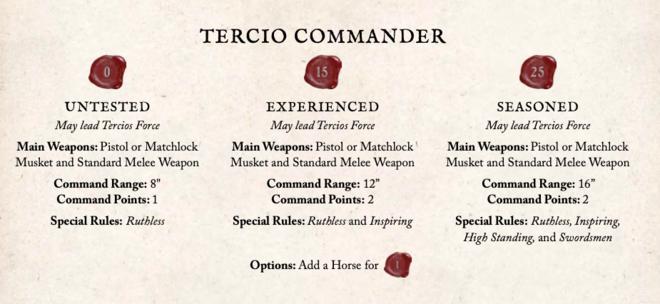
Historic and Legendary Commanders are similar to their previous incarnation but we the book includes many more. Tools the developers were working with include that many named commanders add units to their faction list or special rules to ships taken.
Troops #
The Unit descriptions have moved from quarter-page descriptions to a more open full-column descriptions giving each unit half a page. A nice touch is that many Units have a small caption under the model image showing the Firelock Game’s model kit used for the unit’s photo. Due to the nature of the game many units are essentially a specific build of a basic core box: the Sailors box, for example, can be built into a range of units and includes multiple weapon options. In general many troops of the era would be broadly similar at 28mm scale within similar roles: A soldier looks like a soldier, a sailor looks like a sailor.
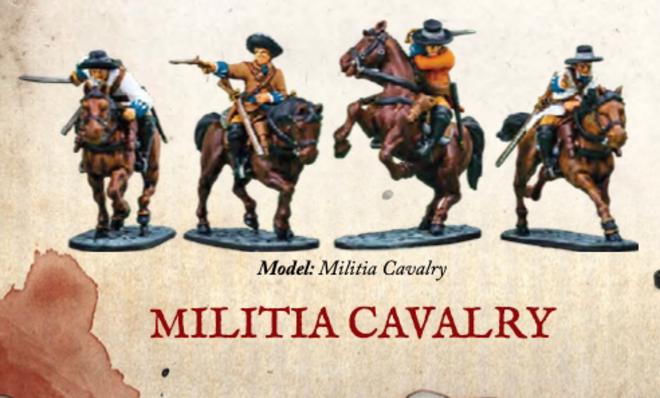
An interesting mechanical bit is some upgrades are per-model (“Unit may be upgraded to Trained for 1 point per model.”) but some are per-unit (“Unit may add Armor to all it’s models for 2 points (not per model).”) which suggests difficulty valuing the upgrade. Remember that unit size is a function of the chosen game size, with unit minimum and maximums changing based on the size of game to be played.
The actual troops seem more nuanced and interesting than the core book. I’m still concerned that there’s a lot of ‘average’ statistics, but they’re a bit more interesting with more specialists and similar. I feel like an informal “role” suggestion would be useful. For example, the French Coureur Des Bois are armed with muskets and have several sneaky skills: an informal tag like “Skirmisher” would be appreciated.
The Dutch #
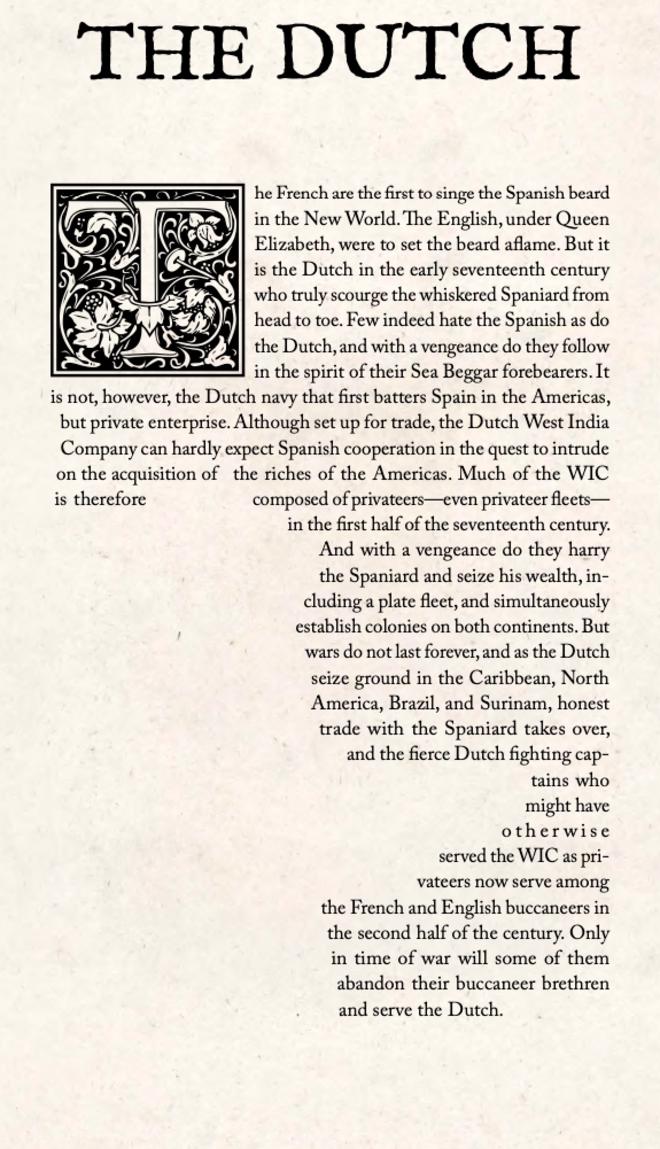
The Dutch Standard Commanders only have 2 ‘tracks’ for the three grades of troops and continue the ambiguous Horse upgrade. They receive 6 Historic Commanders and a single Legendary Commander in the form of Piet Heyn.
Dutch have some common special rules that push them to use ships, namely three maritime-focused factions have a rule to add the shallow draft rule to ships. They have nine units of troops and none seem particularly ’elite’ but many can be upgraded to that direction.
The Native Americans #
Another new faction here is the Native Americans which covers a diverse collection of tribes and tribal groupings. An issue here is the ten factions vary greatly in background. Some are given full descriptions, others handled as part of a parent group, while some have no description at all.
The Native Americans look like they play differently enough from the colonial factions to hopefully upset the game’s meta in a positive way. They’re focused on somewhat cheaper units that can often take skills to infiltrate. They can’t compete in artillery or ships, so need to maximize their use of other tools. They have the most access to bows and several other rules players of other factions are likely unfamiliar with.
The faction has four rules, heavy on restrictions, which can be summarized as:
- Can’t take ships Size 2 or larger.
- If the attacker, may deploy half the units in sneaky ways.
- Ships included gain Paddles. (Note a likely ship for the faction, the Canoa or canoe, already has this trait. )
- No Artillery.
I’ve seen some online comments suggesting these factions tend to be “glass cannons” that hit hard, but can crumble once counterattacked.
The ten factions are presented identically to the others provided and represent various tribes, alliances, and regional groups. For example, if I wanted to represent a force native to Maryland I’d need to look at the Northeastern Tribes and Southeastern Tribes factions to see which fits best.
The Standard Commanders have two tracks for Southern and Northern commanders.
Historic commanders cover a range of factions and value with eight profiles. The single Legendary is King Golden Cap. The commanders are light on Unique special rules, but this is understandable as the player selecting them is already accepting the special faction rules and overall difference in play style from the European factions.
They’re light on Units with only 4 profiles. Four of the factions borrow units from other lists. The native profiles seem slightly on the cheap side with three of the units costing 4 points per model and the final unit a single point more. The units have options, but less so than the bulk of units in this book.
The rules strongly suggest that this is a ‘hoard’ army based on the provided rules. Assume roughly twenty troops per hundred points of game: The commander is an expense, but you won’t be spending much on ships or cannons. You can go other directions, but it may be playing against the rules.
The game does make heavy use of negative traits. I’m worried these can be forgotten (accidentally or intentionally) in play. One trait many Native American factions have is The Sound of Thunder which represents units unfamiliar with firearms potentially taking more fatigue when attacked by them (representing morale) it’s a negative rule and one I feel a Native American player needs to explain to opponents.
There’s some fun looking builds in this section like poison arrow wielding forces or using tons of small boats to attack a large vessel.
I feel like this is a great addition to the game both mechanically and thematically. They look to play differently enough from the main factions to provide a unique experience. They’re an obvious part of the setting and getting full rules (as opposed to just being allies or supporting units) is a good move to make them an interesting part of the game.
Unaligned and Peripheral Powers #
This “nation” was represented in the Core but is developed greatly here. It actually feels complete now, but at the same time is still the game’s “junk drawer” where things are put that don’t fit elsewhere.
Ten widely diverse factions cover several countries and less organized groupings. I’m going to break my own policy and just summarize them here:
- Pirates: There’s finally a true Pirate faction in what’s considered “that pirate game!” I think Raise the Black moves them to be their own full ’nationality’ but as of this book they’re the first Unaligned option presented. Like the previous book, they’re mostly formed of units taken from the other Nations, but they do get some ‘generic’ units now.
- Portuguese Bandeirantes: Essentially colonial forces trying to settle the edges the larger peers haven’t already claimed. They’re sneaky.
- Portugese-Brazilian Tercios & Militia: A more ‘regular army’ group.
- Swedish Militia: Another minor power in the region, they do gain free upgrades to Artillery specialists and special rules to allow them to be tough and skilled. They have limited access to a few Native American units.
- Danish Militia: Another small, limited force. This feels like a “core book’ faction as it is very limited.
- Brandenburg Privateers: The descriptions suggests this short-lived faction as a sort of organized criminal enterprise. They get the new “pirate special’ which, like the earlier Pirates faction, means they can roll two dice and pick the result they want for the vital Strike Tests used for moral.
- Brethren of the Coast: Brought forward from the core, this unit had 8 units in the core and 14 now. it’s broadly similar (essentially the same Special Rules).
- Logwood Cutter: I’ll be honest that I had to look up why lumberjacks were a separate faction. It turns out Logwood is a valuable resource for dying textiles and paper. They look to play as pirates that aren’t as motivated by actual piracy so much as poaching valuable trees with occasional breaks spent on piracy and related tasks. They have an interesting rule representing that if they’re defenders they’re likely drunk or unready to repel the attack.
- Black Caribs: This is essentially Africans who have settled in the region. They’re essentially a Native American list (even using the Southern Tribes Commander) with the same restrictions on ships, artillery, and similar.
- Scottish Militia: it should be noted that Scotland and England form the Kingdom of Great Britain during the era this game covers. As of this list, they’re an independent power and this list represents an independent Scotland. Admittedly, it does so with a mix of generic European and English troops, but it does look like a playable faction.
It’s a lot of factions and a diverse group. There’s several that could probably have been compressed into a “Minor Powers” faction while others could be integrated into the other lists, but that’s arguable either way.
Unsurprisingly there’s two Commander tracks for a generic European Commander (with Horse option) and a Sea commander. They’re basic, and you really want to check your Faction write-up in case your chosen faction uses a commander from another list, but they look workable.
This chapter has seven Historic commanders that are predictably strongly linked to specific factions. Sven Svensson Skute is the only one that can lead two factions, and that’s the Swedish Militia and the Dutch Militia based on his actual history.
The Unaligned chapter has nine Unit profiles, which is an impressive upgrade from the Core book where they received none. Many of these units are generic, such as the European Sailors, European Soldiers, European Militia, and others. As this book adds options the units are customizable.
More interesting units include the Jewish Militia who are similar to the basic soldier, but can’t shoot as well and have different special rules. They also have an option to trade the Drilled rule for the Elusive rule, essentially selecting between orderly line soldiers and skirmishers.
The African Warriors are one of the few non-Native units with Bows and add more variety to the list.
While the list is somewhat generic, it shows how units can be used to specialize. For example, there’s European Sailors and Pressed Men who are both equally good at ship-related actions (due to the Sailors special rule). The Pressed Men are half the cost, but truly horrible at combat with no ranged weapons standard. This might be acceptable if force is built around the larger ships where this unit would be busy working the ship with other units focused on defensive and offensive responsibilities.
Characters #
I think my disappointment with the Core Rulebook’s Characters section was clear to anyone that read the previous review. It had two ‘classes’ of characters and provided one example. I felt this was unsatisfying and I am glad to see we get 10 Fighting Men and 5 Advisors & hostages (including the Spiritual Leader reprinted from the Core rules).
Fighting Men #
Improving on “none” shouldn’t be difficult. This section removes my concerns as there’s a wide range of these “upgrade characters.” As described in the Core, these are pointed as “+5” or similar, and are an upgrade taking a model from a unit and replacing it with the specialist at the listed cost on top of the model’s normal cost.
For example, you could have a unit of six European Sailors (4 points per model, so 24 points) and add the Carpenter. The Carpenter is an additional 4 points (total of 28) with the unit now consisting of 5 normal European Sailors and a Carpenter (who uses the European Sailor’s scores and gear). The Carpenter has a special Command Point for the Repair action and a bonus to do so, allowing a ship to stay afloat longer.
Note that these have Nationality and Unit Restrictions: Native Americans can’t take many of these tied to technology outside their grasp while many specialists must be in an appropriate unit (like the Master Gunner must be assigned to a unit with Artillery skills).
This is much more satisfying than the previous: I want more! Maybe faction-specific characters.
Advisors & hostages #
With the only option in the Core being the somewhat lackluster Spiritual Advisor, the additional characters here are welcome. As a reminder, these models are add-ons, adding a non-combatant upgrade to the Unit they’re attached to. I mention this because it feels arbitrarily different from the Fighting Men. All Advisors or Hostages have ‘unique’ special rules, and some may add normal special rules as well. These characters attach to the nearest unit. This can even result in them moving to another force. Controlling these characters at the end of a game can help win the game. The actual characters are a mix of different interesting concepts: a Local Guide can help friendly units move faster, while the Ship’s Pilot makes it less risky for your ships to come closer to the shore.
The Captured Merchant looks fun: He makes it tougher for the unit holding the model to be hit with ranged attacks as he’s too valuable to risk injuring. He can be captured, which gives his bonus to the Unit containing him and has the High Standing rule preventing his unit being sneaky.
The Spiritual Leader is reprinted here.
Special Rules, Weapons, and Equipment #
This book reprints the Special Rules, Weapons, and Equipment from the Core. It’s a lot of material but I do like that the added rules are labeled in red so they stand out.
This is where it can be a bit confusing, though, as all or most of the ‘new’ rules have been added to the current Core Rulebook. As mentioned earlier, I believe this book was first written to the game’s original core rules, then revised to match the current revised core rules.
Ships #
The core rulebook contains four ships.
- Longboat
- Sloop
- Brigantine
- Light Frigate
This book has a much more impressive 16! Here’s a quick breakdown by size:
| Size | Vessel | At a Glance |
|---|---|---|
| 1 | Canoa | Basic rowboat. Unarmed, but cheap. |
| Piragua | Small sailboat can can optionally mount a single light cannon. | |
| Longboat | Reprinted from Core. Midpoint between the other two Size 1 boats. | |
| 2 | Bark | Simple, basic light vessel |
| Sloop | Reprinted from Core. These come in the Starter Set. | |
| Privateer Sloop | The first 'variant' which is a point cheaper than the base mode and is faster but more fragile. | |
| Heavy Bark | Described as an "Alternative Sloop Rig" and it does appear the difference i how the sails are configured. | |
| Corvette | TBD | |
| 3 | Brigantine | Reprinted from Core. An example of a true combat-oriented ship. |
| Privateer Brigantine | Another variant; Similarly faster but more fragile. | |
| Sloop of War | "Alternate Brigantine Rig" which gets the speed of the Privateer version but retains the Hull integrity; May also use the Fighting Tops rule we'll delve into in the next section. | |
| Light Frigate | Reprinted from Core but gains an option for Fighting Tops that will be explained in the next section. | |
| Merchant Frigate | Essentially the Light Frigate but a bit less sturdy. May add Fighting Tops as the other Frigates can. | |
| Fluyt | A very sturdy vessel and may use the Poop Dek and Fighting Tops special rules. | |
| Privateer Fluyt | As is common it's faster but less sturdy. | |
| 4 | Galleon | The largest ship in this book. Also the most expensive. I think it uses all of the subsection rules. |
The Ship Traits section is similar to the previous Special Rules section in highlighting new rules that really aren’t new. The most interesting traits are “Fighting Platform, Fighting Tops, Poop Deck, Gallery, and Gun Decks” which were teased in the Core Book as being in this book, and teased here as being in the next chapter.
The new ships are great: We get expansion at both the lower end (The Canoa is ideal for various ‘raider’ forces) and the top end (The Galleon is the biggest ship in the game).
The Galleon is 25 points. That’s “empty” without upgrades or armaments. If you wanted to fully loaded it with Heavy Cannon and Swivel Guns, it could be over 250 points if my math is correct. That’s ignoring the crew for all of that. You’ll also need substantial rules from the next chapter.
Note that ship stats are presented in both an individual format similar to the unit descriptions and a two page spread of tables.
New Rules #
This is the most mechanically dense part of the book: We start with a few rules that are clarifications or addendums to make new rules work better like specifying how the High Standing rule works or Cannons and elevations.
There’s an optional rule for reduced Melee saves for Shaken units that would otherwise not receive them at all. It’s a simple rule, and described as intended for players that find melee a bit too punishing. This finishes up a page and then we get Subsections.
Subsections #
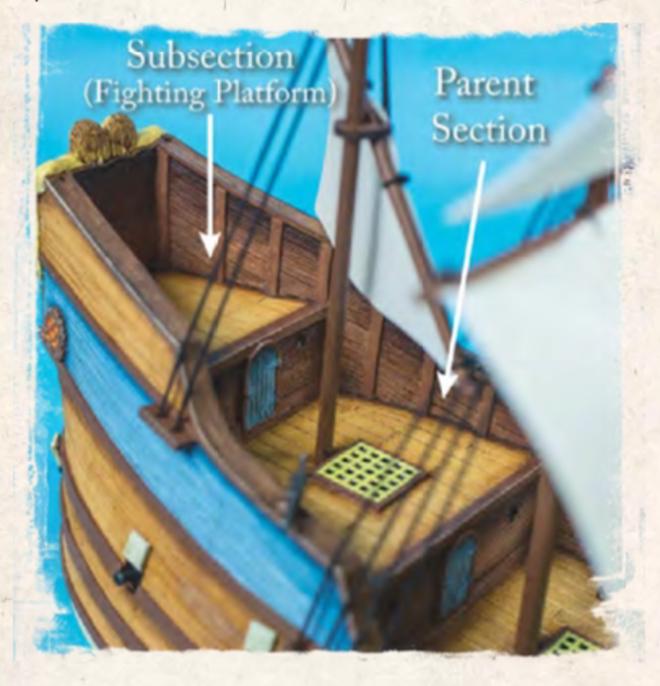
The original rules have a clever idea for how the ship models work: Each deck represents a Section, which is used to simplify movement and range. If a model is in a Section, their exact position doesn’t matter as movement and range is measured from the section. It simplifies movement and managing tight spaces. It seems like a great example of simplification that aids the game without removing interesting choices.
Not all ships work so easily in this framework, so a couple pages cover the idea and mechanics of Subsections. These are small areas that don’t quite fit the normal rules. Crew in the rigging? Those are Fighting Tops. Larger ship with lower decks for cannons? Gun Decks. That little ‘balcony’ off the back of some ships of the era? That’s a Gallery.
I’ve seen some references that these rules are not well-liked and I can understand why. They add some complication to the otherwise clean basic rules. The image above shows a Fighting Platform that is a subsection and really doesn’t need to be: It’s just an expansion of the main section in practice.
All troops on a Subsection must be from the same unit, but it can be only part of the unit. Subsections do state their maximum occupancy. If you can fit an entire unit in a Subsection you can break the normal ‘2 units per section’ restriction. Some Subsections are also “off-board” like the Gun Decks of the Galleon Since it’s closed up you can’t put gun crews on the lower decks.
Common Subsections #
There’s several common subsections:
- Fighting Platforms: The simplest and probably least necessary.
- Fighting Tops: Platforms in a ship’s rigging. Elevated attacks but the crew may be injured if the rigging is attacked.
- Gun Decks: Lower deck dedicated to cannons. This is called-out as an optional Special Rule: If players wish, the canons can just be controlled from the deck above, which is the main “section” for the ship. Crew in gun decks are restricted to basically operating cannons, but also gain protection.
These rules add quite a bit of detail, but it feels like it may be something used intermittently for players who have the large ship models while others may ignore them.
Other New Rules #
This section is elaboration on ship movement while a ship is grappled revised to handle Size 4 ships. Boring but necessary.
Campaign System #
The Campaign rules look fun. It’s not quite as detailed as classic Necromunda or similar, but definitely fun for a group that plays the game often.
“Commander” based system would be a good way to describe these rules. Creating a Character is a 10 step process, with the last 3 being ‘determining Campaign rules’ and it does mean you’re using essentially versions of the basic Standard Commanders and broader Factions. Commanders have Experience and Reputation as tracked values.
I try not to pick apart typos too much (I obviously have more than enough of my own), but this section has some egregious typos:
During each Campaign Turn, players will have oen or two ggames to play.
Finally the point structure for the campaign is determined. A suggestion is the ’escalation format’ where the point values increase over weeks.
Another 9 step process covers Campaign Turns. An interesting gimmick is the group generates a pool of random Scenario/Theatre combinations and then uses a version of the game’s initiative rules to handle the turn. Jokers trigger events, so there’s a special event table.
Presumably to smooth out things there’s an optional re-roll (which presumably can trigger more events) done in order from lowest to highest experience points of Commanders. The lowest player may redraw for free, but everyone else burns a Reputation point to draw cards.
The Card Draw is used for initiative in the same way as the cards are used in the game with card values used to settle ties.
Players take turns spending Reputation on Resources and choosing from the earlier pool of Scenario/Theatre combinations. They can choose an opponent from these.
And then, finally, battles are fought. Players always get the full point limit and the commander is “free.” Units are stripped down unless the player has the appropriate Resources.
After-game there’s some cleanup chores. Commanders get a point of Reputation just for showing up, and more for for winning and a few other special circumstances. Experience earned is the same as Reputation earned although the rules suggest there may be exceptions. The difference seems to be that Experience is used to upgrade a commander and as the final ‘score’ for the campaign, while Reputation is used for immediate goals like increasing Resources.
There’s also a section for Tactics: So in normal play certain card suites means more Actions for experienced troops. With the Tactics rule players that pick slower cards for the main ‘strategic’ turn get no Tactics while the player stuck with a slower card gets one to three choices from a list of tactics (8 each for Attacker and Defender) that modify the scenario. Many jsut remove elementes like negating the Drunk Special Rule, while others grant that rule. They’re played in secret.
This section is placed after the game is played and the cards for the Turn have been drawn,
Commanders improve as they gain XP and gain Command Points, Command Range, and Skills. The table is poorly written in a way that suggests it was perhaps hastily rewritten.
There’s notes in the chapter to handle a captured commander with the rules suggesting that commanders are always captured and not killed. it’s a major setback, causing a loss of 10 experience points, but not so damaging that the player hopefully won’t enjoy playing and could still win in the campaign.
These rules look fun, but they seem to be something of a skeleton at this time. They need another revision to clean up some errors.
New Scenarios #
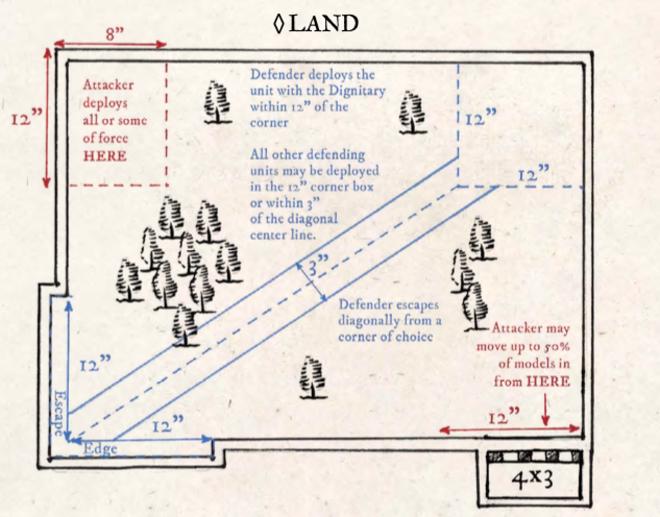
The Core book uses colored diagrams that are functional, but I much prefer the diagrams in this book. They’re in a charming line-art style. The Core book is mostly variations on “basic war game table setups” while this book focuses on interesting scenarios: Escorting a VIP, searching for valuables, etc.
Expanded Events And Wrap-up #
The Event table is used when players draw a joker during a game. This book adds three more tables; One universal, one for land events, and one for sea events. It also adds a table to roll on to select which table to use if you want to use all of them.
The book has a comprehensive nine page index.
There’s some padding at the end of the book: 2 pages of tracking sheets for campaign play. 2 pages of lined paper for notes.
Looking Forward #
As with my original review I don’t think this is a bad game. It’s oddly organized, and I am considering how much of that is an artifact of the books being revised independently. I feel like Firelock Games needs to decide how they want the rules to work and do 1-2 books that reformat this material.
This is a much improved view of the game. The formatting of the material is greatly improved. The world seems more full of interesting aspects. The Native American group and several factions look like fun additions that make the game more diverse and interesting.
